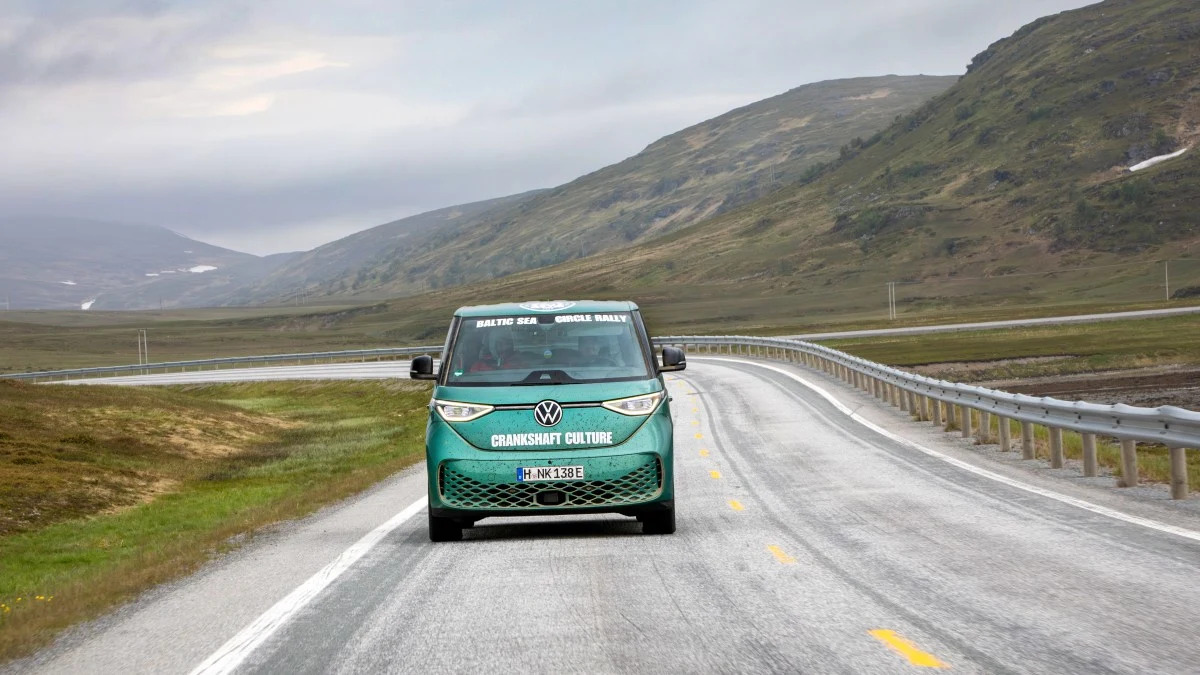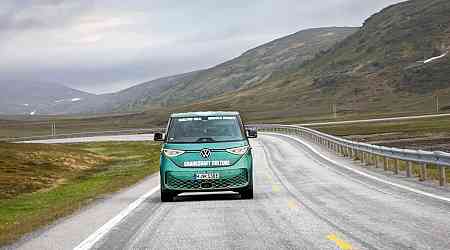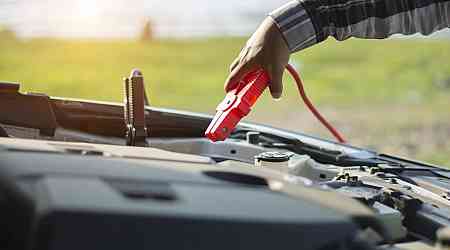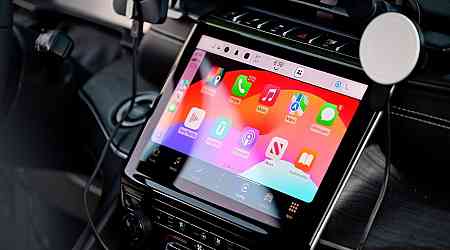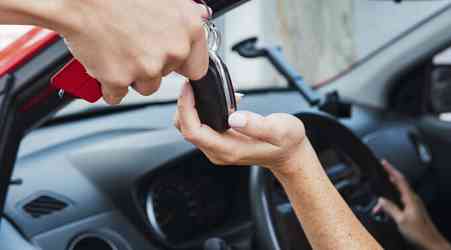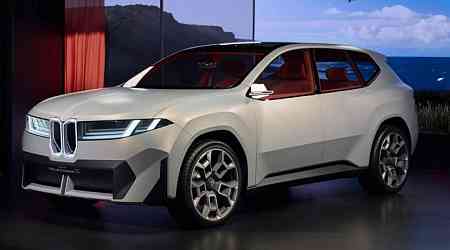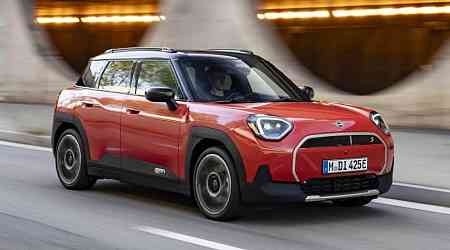Completing a 16-day, nine-country rally around the Baltic Sea is hard enough. Doing it in an all-electric car seems like, well, madness. Right? Well, that’s exactly what my husband and I did, tackling the 2024 Baltic Sea Circle Rally in a European-spec short wheelbase Volkswagen ID. Buzz Pro EV.
The Baltic Sea Circle Rally is the brainchild of Hamburg, Germany-based rally organization Superlative Adventure Club (SAC). Run since 2011, the Baltic Sea Circle Rally is part fun run and part competition, touring through backroads with no GPS and only paper maps, packed with a massive sense of adventure as teams camped along the way.
Each year, the Baltic Circle Sea Rally (both summer and winter iterations) asks teams to raise at least 500 euros (approximately $540 USD) for their favorite charity. We chose to support The Jessi Combs Foundation – the charity named in honor of the late racer and TV personality, which educates and supports young women seeking careers in automotive trades and similar fields. Along with several generous donors, we raised $3,239 USD (over 2,985 euros) for the nonprofit.
Unlike some competitions in North America, like the Alcan 5000 Rally, the Baltic Sea Circle Rally is an adventure rally where unique daily challenges and off-the-wall missions created an exciting journey around the Baltic Sea while basking in the midnight sun. There were 140 teams entered in this year’s Baltic Sea Circle Rally, with all but one team not from Europe or its nearby regions: us. My husband and I traveled from Oregon to Germany to compete. We were also the only team piloting an all-electric vehicle this year — an incredible feat given we needed to travel 5,000 miles through nine countries.

Where did the rally take us?
Some rallies, like time-speed-distance competitions, are based on precision and particular routes. But the Baltic Sea Circle Rally has a suggested course that’s noted in a thick spiral-bound roadbook. It can loosely be followed, as long as you cross the finish line. Or, as some teams did, you could massively deviate from the course or head home early if you chose.
Teams started in northern Germany and worked their way through the eight of the nine countries that meet the Baltic Sea, plus Norway. Over the 16-day duration, June 22 through July 7, we drove a clockwise route through Germany, Denmark, Sweden, Norway, Finland, Estonia, Latvia, Lithuania and Poland. Despite the name, we didn’t actually spend much time near the Baltic Sea.
That was especially true when we achieved one of our personal goals: drive to the northernmost point in all of Europe: Nordkapp, Norway, aka the North Cape. This special place beckons adventurers with its steep cliffs and iconic globe sculpture located at 71°10′21″N 25°47′04″E. Nordkapp is just 1,306 miles from the North Pole and is considered the mid-point of the Baltic Circle Sea Rally.

A big green box with a Ququq BusBox
Our 2024 Volkswagen ID. Buzz Pro arrived sporting a very cool Bay Leaf Green paint job with a matching Jade Green/Mistral two-tone interior. Unlike the minivan-like three-row ID. Buzz that will eventually come to the United States, this was the Euro-spec, short-wheelbase two-row model that’s basically an enormous hatchback with sliding doors. Emphasis on enormous. Besides its sheer capacity, it features several smartly designed areas for storage, including a clever floor-mounted center console with bins, drawers and cubbies that’s removable and reversible, making the most of the vehicle’s storage capabilities. It even includes a secret bottle opener.
Our ID. Buzz Pro van also featured a Ququq BusBox-4 camping system for sleeping, cooking, and storing gear — an extra installed for the rally. This unique interior camp unit is easy to set up in any ID. Buzz. Simply fold the rear seats down, secure the Ququq camp box in place, and voilà, the ID. Buzz turns into a camper van. The system works super-well; it’s well built, thoughtfully designed, sturdy and easy to use.

Volkswagen’s volts
This Euro-spec ID. Buzz has a single rear motor that generates 201 HP and 229 pound-feet of torque, which is the same output as the ID.4 Standard sold here in the United States, albeit with a bigger, 82-kilowatt battery. Considering the ID. Buzz is a bigger vehicle, it shouldn’t be surprising that it’s quite slow, hitting 62 mph (100 km/h) in 10.2 seconds.
As this was an earlier-built 2024 ID. Buzz, that 82-kWh battery was said to achieve 250 to 262 miles of range, but that’s on the uber-optimistic WLTP European testing cycle. Here’s what it actually managed. After 36 charges and extensive statistical analysis, our ID. Buzz Pro netted a wide range of total kilometers after charging to 100%. On the high end, we actually surpassed that WLTP estimate. For instance, we charged in Molde, Norway, arriving with 57% and 272 kilometers (169 miles) of charge left. We had a lot of remote traveling coming up, so we decided to top off. After 38 minutes to reach 100% charge, we bumped our ID. Buzz up to an impressive 467 km (290 miles). We also managed two other charges that topped over 440 kilometers (273 miles). Conversely, we amassed a few charges that barely topped 200 miles when fully charging it.
Our VW ID. Buzz Pro was said to have a 30-minute charge time from 5% to 80% SOC (state of charge), if you used DC charging at 170kW, the max it would handle. This time frame seemed accurate compared to our figures.
Most of the chargers in our nine-country jaunt were 150 kilowatt (a few were faster), though when we crossed from Finland into the Baltic nations of Estonia, Latvia and Lithuania, ultra-fast chargers were hard to come by. Most were 22 kW or lower, with occasional 50 kW units mixed in. We packed patience and left earlier each morning as other teams still slept so we could keep pace with the competition.



Volkswagen ID. Buzz impressions
“I was worried about whether or not we'd have enough range between charges,” my husband Andy said. This was his first long-distance endurance event in an all-electric vehicle. “There were so many unknowns having an EV in Europe; I worried we might run out of charge in the middle of nowhere.”
However, after finishing, Andy was confident in traveling longer distances with an EV, especially as we were driving one with a relatively modest range like the ID. Buzz.
Beyond its EV-ness, the ID. Buzz has great outward visibility and it was able to do everything we wanted to do in it, including sleeping, storing gear and cooking. The ID. Buzz never lacked a place to put gear, and remember, we had the smaller, two-row model. The one that’ll show up in the United States will be bigger, complete with a 91-kWh battery and a more powerful 282-hp motor from the updated ID.4. A dual-motor, all-wheel-drive variant good for 335 hp will be available. It’ll also have an updated infotainment system and interior controls, unlike ours that was still blighted by what came in the original ID.4.


Charging challenges (and consequent wins)
Previous ralliers told us to cover at least 310 miles (500 km) a day to finish the rally in time. However, we pressed beyond and forged our way through 500 miles (800+ km) multiple days.
Most days we charged least three times, maintaining continual reserves in case broken chargers, missing machines, etc. delayed us. That was a good call, it happened multiple times.
Turns out charging an electric vehicle in Germany is rather difficult for Americans. We could not download German charging apps to our U.S.-based phones, nor could we pay with our American credit cards at German chargers as they inevitably required apps, special charging cards or RFID keys. Thankfully, we knew this in advance and enlisted my German nephew, Pual, to give us a hand. Not only did he procure a number of those special charging cards, he loaned us an old iPhone that would in fact work with the various German charging apps.
Once in Scandinavia, however, we were able to download charging apps and could use our phones to pay for charging. We also were able to use Tesla Superchargers.


The eastern side of the Baltic Sea brought new challenges. Once we crossed into Estonia, no app would work, including the new ones we loaded. Our initial research showed they should have, but that seemed to be incorrect. The Baltic nations’ Circle K chargers were apparently not the same as Scandinavia’s Circle Ks, and that app didn’t work, either. Even Tesla no longer worked in Estonia, Latvia and Lithuania, plus Poland.
We weren’t dead in the water, though. New QR codes and app download instructions on charge machines came to the rescue. Greenway is the largest charging system in Poland, and once we figured that out it became our go-do charging system until back in Germany.
All told, it was fascinatingly complicated to figure out how to pilot an all-electric vehicle through nine countries and 4,771 miles with European phones and credit cards. That’s an infrastructure, technology and banking issue, though. Once charging sessions were authorized, our 2024 ID. Buzz was seamless and trustworthy, giving us smooth charging experiences time after time.
There is also hope for the future. By 2027, new European EV chargers will be mandated to accept credit cards without needing charging accounts, with existing units being retrofitted. Only two of the 36 chargers we used had direct credit card capability.

Crossing the finish line
In short, we successfully completed the 16-day, nine-country international rally in our electric Volkswagen van. After crossing the finish line, we became the first duo that lived outside of the European Union or adjacent country to compete in and finish an SAC rally with an EV. We also proved an important point: Long-distance EV travel is possible. It takes planning, patience and flexibility, especially when things need to change, but what we accomplished is a whole lot harder than trying to travel 4,771 miles through nine American states. Our charging infrastructure still needs a ton of work, but at least you don’t need to borrow your nephew’s phone or download 13 different charging apps.


















